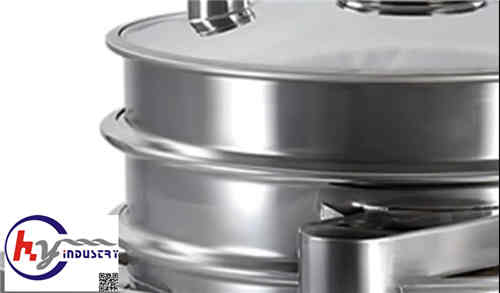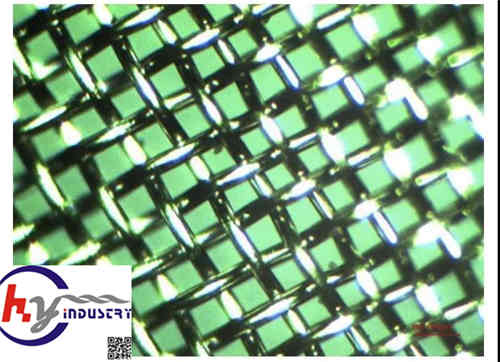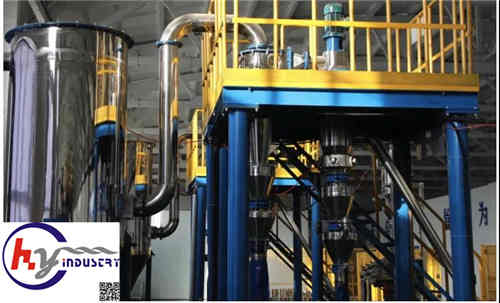Design of batch metal 3D printing powder grading equipment (HY-industry technical centre)
Classification requirements of powder
At this stage, metal 3D printing has completed the development of large-size equipment. Many printing service providers have begun to deploy large-size equipment in batches, and the corresponding single-batch powder demand has increased to 3 to 5 times the previous. While using high-capacity powder milling equipment, it is also necessary to perform stable and efficient classification of the produced powder.

Difficulties of batch grading
Metal powder classification generally uses screens and airflow classification. Different methods are selected according to different powder matrix, particle size distribution, powder sphericity, etc.
(1) Screen classification
-
The screen is a mesh structure made of metal wire weaving or metal plate punching, and its fixed aperture distinguishes powders of different particle sizes. But the static powder is easy to jam the screen mesh, so it is necessary to use pendulum, ultrasonic, inclined surface vibration, rotating vibration or slap to make the powder move in order to achieve the purpose of continuous screening.
-
 Most of the 3D printing powders are below 50μm and can only use the mesh woven with fine metal mesh. Because the mesh is very fine, and the cross point of the mesh in the horizontal and vertical directions cannot be fixed, it is difficult to precisely control the aperture size of the mesh. The allowable error of the 270 mesh (53μm) screen in the national standard is as high as 30%, and there will be greater deformation during actual use. Therefore, the classification efficiency of the screen is difficult to reach 80%. The powder classification under the same equipment and process As a result, there will be large errors. For 3D printing, which requires very strict powder particle size distribution, the use of screen classification often requires constant rework adjustments.
Most of the 3D printing powders are below 50μm and can only use the mesh woven with fine metal mesh. Because the mesh is very fine, and the cross point of the mesh in the horizontal and vertical directions cannot be fixed, it is difficult to precisely control the aperture size of the mesh. The allowable error of the 270 mesh (53μm) screen in the national standard is as high as 30%, and there will be greater deformation during actual use. Therefore, the classification efficiency of the screen is difficult to reach 80%. The powder classification under the same equipment and process As a result, there will be large errors. For 3D printing, which requires very strict powder particle size distribution, the use of screen classification often requires constant rework adjustments.
(2) Airflow classification
-
Airflow classification is to use high-speed airflow to drive the powder to fly, change the speed or flow direction of the airflow in the classifier, so that the fine powder continues to move with the airflow, and the coarse powder settles down.
-
Theoretically, airflow classification can carry out any particle size classification, and the accuracy is very high. But in fact, 3D printing powder cannot achieve a perfect spherical shape, especially the powder produced by the VIGA process will have some hollow spheres, bonding powder, flake powder, etc. The actual size of these special powders exceeds the design. The boundary line of coarse and fine powders, but they will still follow the airflow into the fine powder. Therefore, the worse the sphericity and the higher the hollow ratio of the powder, the worse the effect of airflow classification.
-
 At the same time, for more active metals such as titanium alloys and aluminum alloys, gas flow classification equipment with inert gas circulation is required, and the cost of use will increase significantly.
At the same time, for more active metals such as titanium alloys and aluminum alloys, gas flow classification equipment with inert gas circulation is required, and the cost of use will increase significantly.
(3) Stability of batch classification
-
Whether it is screen or air current classification, the fluctuation of powder particle size distribution will continue to increase during continuous classification in large batches.
-
When using a screen, it is generally necessary to add ultrasonic vibration, which will make the mesh constantly change, and the changing process is basically impossible to monitor. Especially when stainless steel screen wire is used, the change of its mesh is often irreversible, and after replacing the new screen, due to the different tension between the screen and the frame, the actual aperture needs to be calibrated with standard powder.
-
When using airflow classification, there will be a bag filter at the back of the equipment. During continuous use, a layer of fine powder that cannot be blown off will be attached to the surface of the bag due to the pressure difference between the inside and outside. This part of the powder will reduce the actual filtration area of the bag and reduce the gas The flux changes the particle size boundary of the coarse and fine powder at the front end, and it is necessary to frequently adjust parameters such as air intake volume and classification frequency.
(4) Powder batch
-
Combining batches of powders of different heats is an important part of improving the stability of powders. Conventional mixing equipment can achieve good results for powders less than 1 ton. However, when the mixing amount exceeds 1 ton, the design difficulty of the vacuum pipeline and internal flow passages of the mixing equipment will be greatly increased, especially the internal flow. The high-end design can reduce the mixing time by more than 50% and greatly shorten the production cycle.
Summary
-
When batch grading is performed, the stability of the powder particle size distribution will be greatly reduced. If there is no corresponding process and equipment for immediate adjustment, the consistency of the powder will be very poor, resulting in a significant increase in the uncertainty of the printing process, and at the same time reducing the number of prints The overall performance.
Shanghai HY Industry Co., Ltd has independently developed an integrated grading line, which can work uninterrupted at a processing capacity of 200kg/h. After the equipment runs for 30 hours continuously, the fluctuation of the powder particle size can still be maintained within 3%, which can fully meet the particle size The need for consistency.
With the continuous improvement of powder production capacity, the reliability, stability and accuracy of classification equipment must become an important link that affects powder quality.

